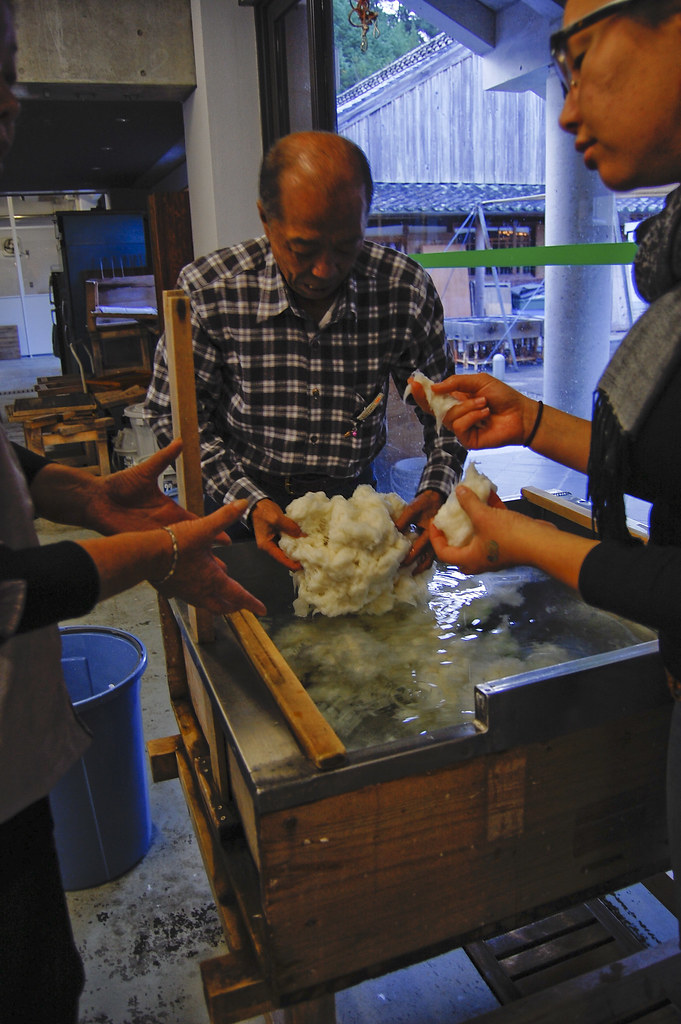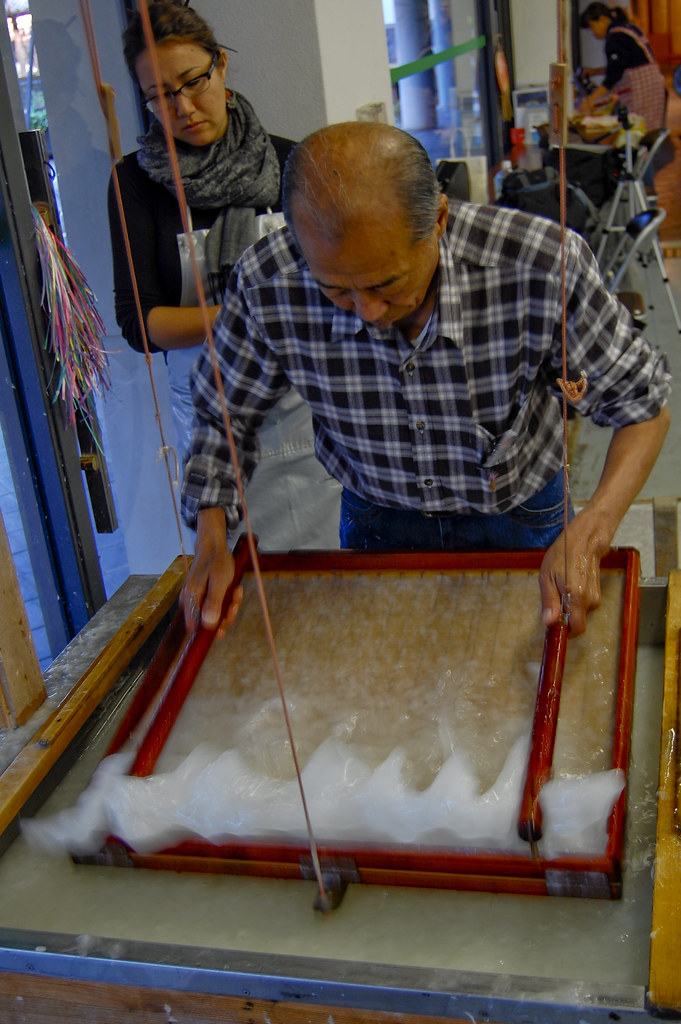I was lucky enough to be invited to make the trip to nearby Ino town to meet Mia's paper making sensei and learn about the process of making traditional Japanese paper. Here are some photos giving a small glimpse into a long and fascinating process.
(
credit for those photos marked with *MRB* goes to Ms. Mia Reiko Braverman)

examining the pulp
It must be understood that this is nowhere near the beginning of the process. This pulp came from kozo (paper mulberry) grown locally in Ino town. The branches are harvested, boiled, stripped of their bark, and dried before being boiled again with lye (to remove the starch, fat, and tannin) and bleached using chemicals or the traditional method of simply leaving the fibers in a secure eddy of a stream. After bleaching, impurities are picked out, and the fibers are beaten into a pulp (quite literally). Only after all this do you get that lovely mashed-potato-looking clumpy stuff you see in the photo above.
Then a special, vaguely snot like glue-type agent called neri is mixed in with the pulp using a big 'ol broomstick sort of thing. I watched Mia doing this and she explained that the way to know if you are mixing right is all based on the sound that you make slopping this semi-viscous pulpy liquid about with that stick. I heard a glooshing sort of sound coming from the vat each time she whipped the handle away from her, and I have to admit, was a bit impressed.

I tried my hand at the pulp stirring, and although I did get a bit of sound to come out of the vat, lets just say the amount of pulp that ended up on my shoes was more impressive than the vague glopping sound issuing from the vat.
Mia beckoned to Hamada sensei to come over and take the handle to really show me what pulpslopping should sound like. Hamada sensei took the stick and began to mix the pulp with the practiced movement of a true master. The explosion of movement in one direction followed by a measured return to the starting position was closer to that of a martial arts strike than a bucket stir, and the sound that came from the stick as it cut a perfect curl of pulpslop was startlingly crisp, much more like a loud wet slap than my sad sloshy glooping.

Once you have your pulp all mixed, you bust out the tray (called a suketa) used to actually make a sheet of paper. You scoop up some pulp (just the right amount, lest your sheet be too thick or too thin) and move it in a left-right and front-back motion (to interlock the fibers... to make your paper strong) before flipping the excess off the end of the suketa.
Mia executing a very nice curl
I had a go as well... this is the part where you transfer the paper from the fine bamboo mat of the suketa to the growing pile of paper
*MRB*
Mia's wet product from two days work
*MRB*
the paper is pressed using ancient Japanese technology...
ye olde bucket o' water
*MRB*
Hamada sensei's son... who is already tearing it up in the paper world
(please excuse the pun)
*MRB*
portrait of Hamada sensei
the playboy of paper himself
*MRB*
Many thanks to Mia Reiko for inviting me along and for the use of her photos in this post.
